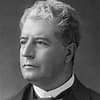
CSIRO’s GenCost report has its flaws
The recent release of the CSIRO’s GenCost report has once again brought the debate on nuclear power to the forefront. While the report includes significant findings, such as the cost comparison between large nuclear reactors and small modular reactors, it also contains several serious limitations that need to be addressed.
Misrepresentation of Costs and Longevity
One of the primary criticisms of the GenCost report is its failure to account for the full system cost of renewables. Renewable energy sources like wind and solar require substantial investment in storage and grid infrastructure to manage their intermittency. These additional costs are often underrepresented in cost comparisons, giving an incomplete picture of the true economic landscape. In contrast, nuclear power provides a stable, continuous output, reducing the need for extensive storage solutions and grid upgrades.
Moreover, the report incorrectly assumes that the economic life of a nuclear power plant is equivalent to that of a solar or wind farm. This is a significant oversight. Nuclear reactors have a lifespan of 60 to 80 years, far surpassing the 20-30 year lifespan of most renewable installations. This extended operational period allows for the initial capital investment in nuclear power to be amortized over a much longer time, ultimately reducing the levelized cost of electricity (LCOE) produced by nuclear plants.
Global Trends and Commitments
The global commitment to nuclear power underscores its viability as a key component of the future energy mix. Over 50 countries are planning to introduce or expand their nuclear capabilities, driven by the need for reliable, low-carbon energy sources. The International Atomic Energy Agency (IAEA) projects a significant increase in nuclear capacity by 2050, highlighting the crucial role nuclear power is expected to play in achieving carbon reduction targets and ensuring energy security.
Countries such as France, China, and Russia are leading the way in nuclear innovation and deployment. France, for instance, derives about 70% of its electricity from nuclear energy, demonstrating the feasibility of large-scale nuclear power integration. China is rapidly expanding its nuclear fleet to meet growing energy demands while reducing reliance on coal, and Russia is pioneering advanced nuclear technologies, including fast breeder reactors and floating nuclear power plants.
Addressing the Timeline and Cost Concerns
The CSIRO report estimates that building a nuclear reactor in Australia would take 15 years and cost more than $8.6 billion. While these figures might seem daunting, they do not reflect the advancements in modular reactor technology and streamlined regulatory processes that many countries are adopting. Small modular reactors (SMRs) and other next-generation nuclear technologies promise reduced construction times and costs due to their modular nature and enhanced safety features.
Furthermore, initial costs should be weighed against long-term benefits. Nuclear power plants, once established, offer predictable and stable energy costs, insulating consumers and industries from the price volatility often associated with fossil fuels and the intermittency of renewable sources. Additionally, the investment in nuclear power infrastructure contributes to energy independence and resilience, reducing reliance on imported fuels.
Conclusion
Despite the limitations highlighted in the GenCost report, nuclear power remains a crucial and viable option for Australia’s energy future. Its ability to provide stable, long-term, low-carbon energy makes it an essential component of a diversified and resilient energy strategy. As the global trend indicates, the commitment to expanding nuclear power infrastructure is not only feasible but necessary to meet the dual challenges of climate change and energy security. It is imperative for policymakers to consider the full scope of benefits and advancements in nuclear technology when making decisions about the nation’s energy future.



